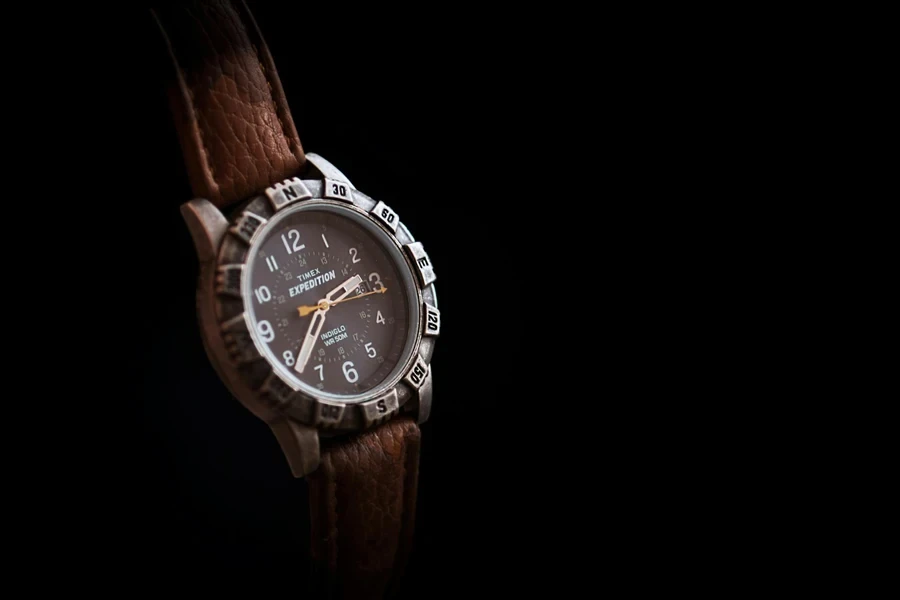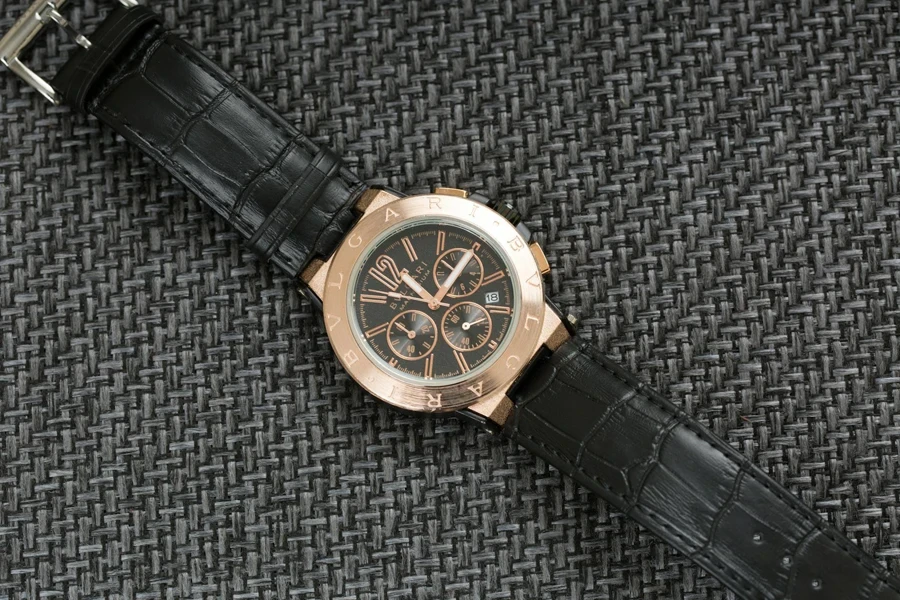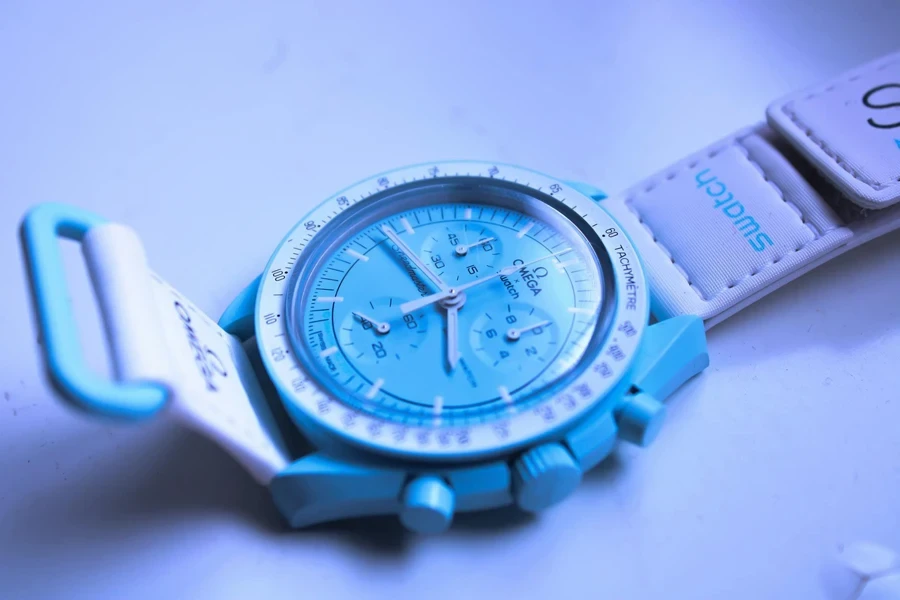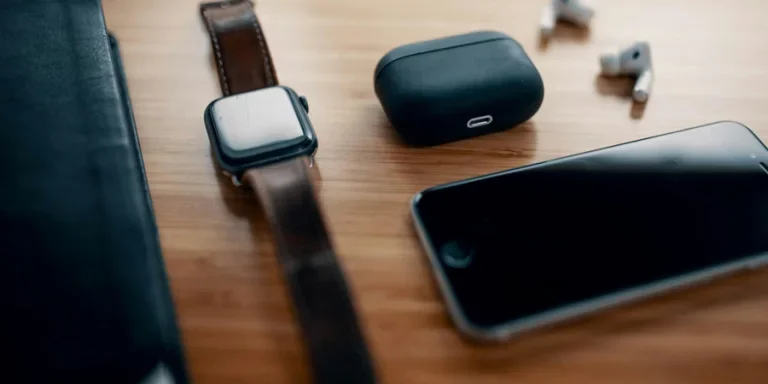Table of Contents
● Introduction
● Market overview
● Different types of tracker straps and their features
● Things to consider when selecting tracker straps
● Conclusion
Introduction
Tracker straps are essential, not just as functional accessories, but as key components in maximizing the efficiency and comfort of wearable devices in professional settings. These straps significantly boost a device’s usability, ensuring a secure, comfortable fit that enables accurate data collection and prolonged wear. As wearable technology evolves, the choice of materials and design for tracker straps has become crucial. From silicone and metal’s durability to nylon’s flexibility and the sophisticated look of specially treated leather, each option offers unique benefits, including water resistance, breathability, and aesthetic versatility. Selecting the right tracker strap is vital for businesses relying on precise activity tracking for health monitoring, employee safety, or operational efficiency. It’s not merely about durability in rigorous conditions but also about customization and easy replacement to meet diverse needs and ensure sustained functionality. This guide explores the critical elements of tracker strap selection, empowering businesses to make informed choices that enhance the utility and performance of their wearable devices.

Market overview
The global fitness tracker market, which encompasses tracker straps, is experiencing remarkable growth. Valued at $55.5 billion in recent estimates, the market is projected to exceed $94 billion by 2027, according to WellnessCreatives. This substantial expansion is driven by several factors, including the increasing consumer awareness of health and fitness, advancements in wearable technology, and the rising prevalence of lifestyle-related diseases. Additionally, businesses are increasingly adopting fitness trackers for employee health monitoring and enhancing operational efficiency, further boosting market growth. The proliferation of smart devices and the integration of fitness tracking capabilities into everyday consumer electronics have also contributed to the market’s upward trajectory. The expansion of online retail and the availability of a wide range of products catering to different consumer needs and preferences are significant factors supporting the market’s growth.
The Compound Annual Growth Rate (CAGR) for the tracker strap market reflects robust demand and continuous innovation. According to Mordor Intelligence, the market is expected to grow at an impressive CAGR of 17.5% from 2023 to 2028. Key players, including major technology companies and specialised wearable manufacturers, hold significant market shares, and their frequent product launches and enhancements are pivotal to maintaining market momentum. The evolution of wearable technology has led to improved sensor accuracy, advanced materials, and enhanced customization options, all of which cater to evolving consumer preferences. Additionally, the market has seen a shift towards more sophisticated designs and materials that offer both aesthetic appeal and functionality, such as treated leather and high-grade silicone. As businesses and consumers alike prioritize health and efficiency, the demand for high-performance tracker straps is set to continue its upward trend, driving further innovation and market expansion.

Different types of tracker straps and their features
Silicone straps
Silicone straps are a popular choice for fitness and activity trackers due to their flexibility, durability, and hypoallergenic properties. These straps are perfect for environments where water or sweat exposure is frequent, as they are water-resistant and easy to clean. Silicone can withstand severe temperature changes, maintaining its integrity whether used in indoor or outdoor activities. The material’s softness and flexibility ensure a comfortable fit, reducing the risk of skin irritation even during prolonged wear. Additionally, silicone’s elasticity allows it to stretch without losing shape, making it a long-lasting option for various wrist sizes and shapes.
Metal straps
Metal straps, particularly those made from stainless steel, are favored for their durability and sleek appearance. These straps are highly resistant to corrosion and require minimal maintenance, making them suitable for professional settings where a sophisticated look is essential. While metal straps are known for their longevity and classic appearance, they are heavier than other materials, which might be a consideration for users prioritizing comfort. Despite their weight, metal straps offer a secure fit and can withstand rigorous conditions without losing their structural integrity, making them a reliable choice for long-term use.
Nylon straps
Nylon straps are valued for their lightweight and breathable properties, making them ideal for activities requiring air circulation around the wrist to reduce sweat buildup. These straps dry quickly, which is beneficial for users who engage in high-intensity workouts or outdoor activities. Nylon offers considerable flexibility, ensuring a comfortable fit for various wrist sizes. Although nylon may not provide the same level of durability as silicone or metal, its affordability and comfort make it a popular choice for casual use and environments where quick drying and breathability are essential.
Treated leather straps
Treated leather straps are a great option for those seeking a balance between elegance and functionality. Undergoing a special tanning process, these straps are enhanced to resist water and wear, making them suitable for professional environments that require a more formal appearance without sacrificing durability. Treated leather provides a sophisticated look while offering a comfortable fit, making it ideal for business settings where style and function are both important. However, treated leather may require more maintenance to keep it looking good and may not be as durable in extremely wet conditions as silicone or metal.
Fabric straps
Fabric straps, often made from materials like cotton or polyester blends, provide a comfortable and lightweight option for everyday wear. These straps are highly breathable, making them suitable for extended use without causing skin irritation. Fabric straps are available in various colors and patterns, offering a level of customization that can match personal style preferences. While not as durable as silicone or metal, fabric straps can be easily cleaned and are often more affordable. Their flexibility and softness make them a comfortable choice for casual use and less strenuous activities.
Hybrid straps
Hybrid straps combine elements from different materials, such as silicone and leather or nylon and metal, to offer a versatile and balanced option. These straps aim to provide the best of both worlds, such as the durability and water resistance of silicone with the sophisticated appearance of leather. Hybrid straps are designed to meet specific needs, offering enhanced functionality and comfort. For instance, a strap with a silicone base for flexibility and a leather outer layer for style can be ideal for both active and professional settings. The combination of materials in hybrid straps allows for greater customization and adaptability, catering to a wide range of preferences and requirements.

Things to consider when selecting tracker straps
Material durability
When selecting a tracker strap, the durability of the material is a crucial factor. Different materials offer varying levels of longevity and resistance to wear and tear. For instance, silicone straps are known for their robustness and ability to withstand harsh conditions, making them ideal for fitness and outdoor activities. Metal straps, particularly stainless steel, offer excellent durability and a sophisticated appearance but may be heavier. Nylon straps, while lightweight and breathable, may not be as long-lasting under extreme conditions compared to silicone or metal. Treated leather provides a balance of elegance and durability but may require more maintenance to keep it looking good. Understanding the specific durability needs of the intended use can help in choosing the right material for long-term performance.
Comfort and fit
Comfort is paramount when selecting a tracker strap, especially for devices worn continuously. The strap should fit securely without causing discomfort or irritation. Silicone straps are soft and flexible, making them comfortable for prolonged wear, while nylon straps offer breathability and reduce sweat buildup, enhancing comfort during intense activities. Metal straps, although durable, can be heavier and might cause discomfort if worn for extended periods. Treated leather straps offer a comfortable fit and a professional look but may need to be broken in. Ensuring the strap is adjustable and fits well on various wrist sizes can also enhance comfort and prevent issues related to chafing or tightness.
Water resistance
Water resistance is a vital feature for tracker straps, especially for those used in environments where exposure to water, sweat, or other liquids is common. Silicone straps excel in this area due to their inherent water-resistant properties, making them suitable for swimming, workouts, and outdoor activities. Metal straps, while generally resistant to corrosion, may not be as water-friendly and could require more care to prevent rust. Nylon straps dry quickly and are ideal for activities involving water but may not offer the same durability as silicone. Treated leather straps, enhanced for water resistance, provide a good balance for professional environments but may still require careful maintenance to avoid water damage. Selecting a water-resistant strap ensures the longevity and functionality of both the strap and the device.
Ergonomic design
An ergonomically designed tracker strap can significantly impact the overall user experience. Ergonomic straps are shaped to contour to the wrist, distributing pressure evenly and reducing strain during extended use. This design is crucial for ensuring that the tracker stays in place, allowing accurate data collection, such as heart rate monitoring. Silicone and nylon straps typically offer excellent ergonomic benefits due to their flexibility and ability to conform to the wrist’s shape. Metal and treated leather straps can also be designed ergonomically, though they might be less flexible. Ensuring that the strap has a comfortable and ergonomic design can enhance wearability and data accuracy.
Customization and aesthetics
Customization options and aesthetic appeal are important considerations for users who want their tracker straps to match their personal style or professional environment. Many straps come in a variety of colors, patterns, and designs, allowing users to personalize their devices. Silicone and nylon straps often offer the widest range of colors and styles, catering to both casual and active users. Metal straps provide a classic, professional look, ideal for business settings, while treated leather straps offer an elegant appearance suitable for formal occasions. Hybrid straps, combining different materials, provide additional customization possibilities. Selecting a strap that aligns with the user’s style preferences can enhance satisfaction and encourage consistent use.
Ease of maintenance and replacement
The ease of maintaining and replacing tracker straps is a practical consideration that can impact the overall user experience. Straps that are easy to clean and maintain will ensure longevity and hygiene, particularly for materials like silicone and nylon that are exposed to sweat and dirt. Silicone straps are typically low-maintenance and can be wiped clean with minimal effort. Nylon straps can be machine-washed, making them convenient for active users. Metal straps may require more careful cleaning to prevent tarnish, while treated leather straps need regular conditioning to maintain their appearance. Additionally, choosing straps with standardised connectors or quick-release mechanisms can simplify the replacement process, allowing users to switch straps effortlessly based on their activities or style needs. Ensuring easy maintenance and replacement can enhance the usability and lifespan of the tracker strap.
Conclusion
In selecting the ideal tracker strap, it’s crucial to consider both the design and the material, as these factors significantly influence wearable devices’ usability, comfort, and longevity. Materials like silicone, metal, nylon, and treated leather each serve specific environments and needs, offering varying degrees of durability, flexibility, and aesthetic appeal. Silicone is praised for its hypoallergenic properties and resistance to water, making it suitable for active settings. At the same time, metal straps are favoured in formal business environments for their durability and classic look. Nylon offers lightness and breathability, ideal for casual use and outdoor activities, and treated leather provides an elegant yet functional option for professional settings where appearance matters. Key features such as water resistance, ergonomic design, and quick-drying capabilities are essential for maintaining the functionality and integrity of the device, especially in rigorous conditions. Additionally, the ease of customization and replacement of these straps ensures that maintenance is straightforward and cost-effective, promoting longevity and continuous performance. Choosing the right tracker strap requires a balance of functional requirements and user preferences to ensure that the wearable device fulfills its role effectively within the intended professional or business context, enhancing operational efficiency and user satisfaction.




